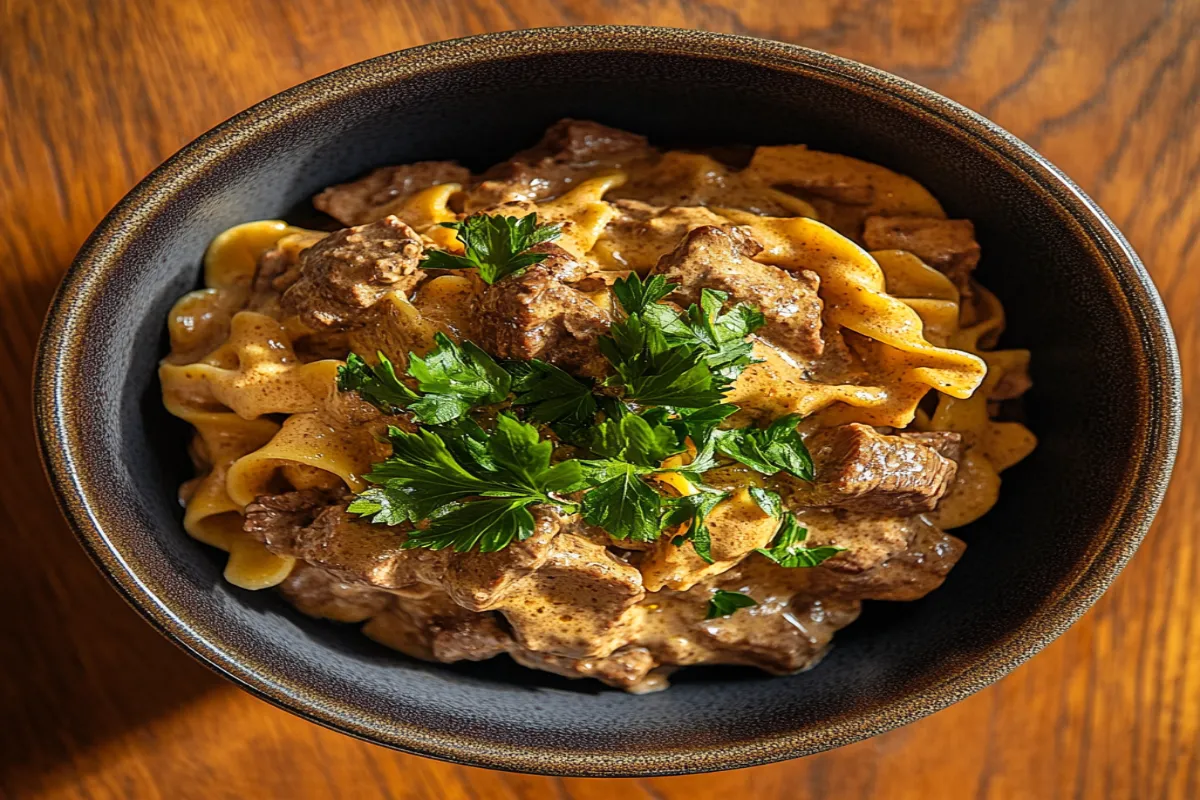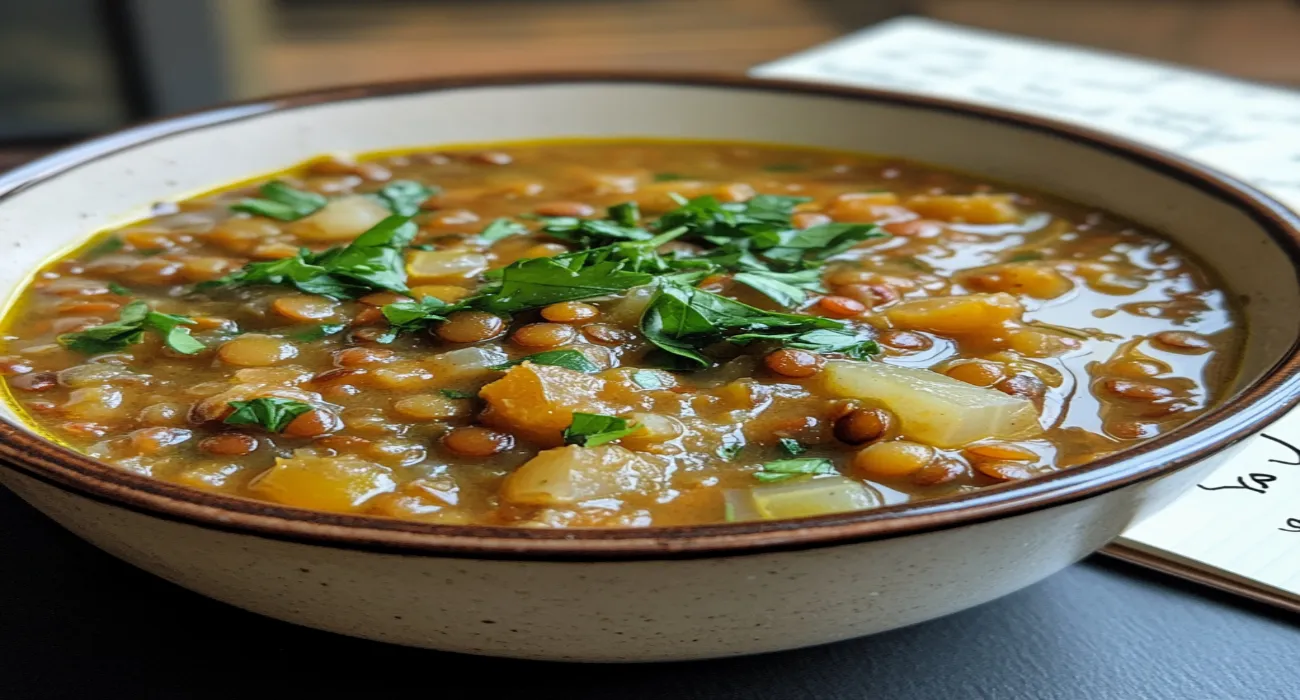Cooking fish in foil has long been considered a convenient and versatile method for preparing a delicious meal. This technique has gained popularity due to its simplicity and the flavourful results it delivers. But is it the best way to cook fish? Let’s dive into the benefits, alternatives, and potential health concerns to determine whether foil is the ideal choice for your next seafood dish.
Introduction to Cooking Fish in Foil
What is Cooking Fish in Foil?
Cooking fish in foil, often referred to as “en papillote” (when using parchment paper), involves wrapping fish in a sheet of aluminium foil, sealing it tightly, and then baking, grilling, or steaming it. This creates a mini-oven effect, locking in moisture and flavour. The result is tender, juicy fish infused with the natural essence of its seasoning and additional ingredients like herbs, vegetables, or sauces.
A Brief History of Foil Cooking Methods
The concept of wrapping food for cooking dates back centuries. Early methods included using leaves, such as banana or grape leaves, to protect food from direct heat and retain juices. The introduction of aluminium foil in the 20th century revolutionised cooking techniques, offering a modern, lightweight, and flexible alternative. This new method quickly became a favourite among home cooks and chefs alike.
Overview of the Method
Cooking fish in foil is simple:
- Season the fish: Add salt, pepper, herbs, and aromatics.
- Wrap it tightly: Ensure there are no gaps for steam to escape.
- Cook using indirect heat: Bake in the oven, grill on a barbecue, or steam over water.
The Benefits of Cooking Fish in Foil
- Preserves the fish’s natural juices, preventing dryness.
- Infuses flavours from added herbs, spices, and vegetables.
- Minimises clean-up, as the foil acts as a disposable cooking vessel.
- Protects delicate fish from breaking apart during cooking.
Why Use Foil for Cooking Fish?
Cooking fish in foil is popular for good reason. It combines convenience with culinary excellence, enhancing both the texture and taste of the fish.
1. Retains Moisture and Juices
Foil traps steam and the fish’s natural oils, creating a moist environment that prevents the fish from drying out. This is particularly useful for lean fish like cod or haddock, which can easily overcook and lose their tenderness.
2. Enhances Flavour Through Steaming
The sealed foil creates a self-contained cooking chamber where herbs, spices, and aromatics can infuse the fish more deeply. Additions like garlic, dill, or lemon slices release their essence into the steam, creating a vibrant, layered flavour profile.
3. Easy Clean-Up and Convenience
One of the biggest draws of foil cooking is its practicality. With no pots or pans to scrub, cleaning is effortless. Plus, the wrapped parcels can be prepped ahead of time, making it ideal for entertaining or meal prep.
For more about enhancing seafood flavours, this guide to seasoning fish provides excellent tips.
Alternatives to Cooking in Foil
While foil offers many advantages, there are other methods for cooking fish that might suit different preferences or needs.
1. Grilling Fish Without Foil
Grilling fish directly on a barbecue imparts a smoky, charred flavour that foil cannot achieve. However, this requires careful handling to prevent delicate fillets from sticking or falling apart.
2. Baking Fish on an Open Tray
Baking fish on a tray or in a shallow dish allows for direct heat exposure, which can create a slightly crisp exterior. This method works well for firmer fish like salmon or swordfish.
3. Cooking Fish Using Parchment Paper
Parchment paper is an alternative to foil that’s both eco-friendly and versatile. It offers a similar steaming effect while being non-reactive, making it a favourite for those concerned about the health implications of aluminium.
For an in-depth look at using parchment paper, check out this step-by-step guide.
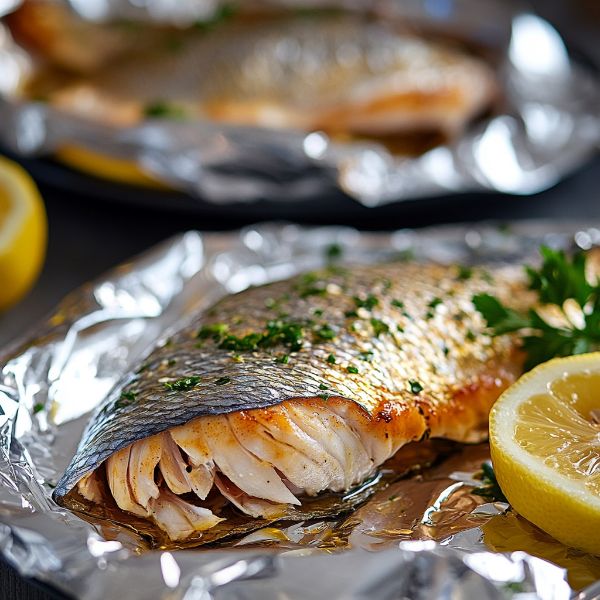
Foil vs Parchment Paper
When deciding between foil and parchment paper, it’s essential to consider flavour, texture, and environmental impact.
1. Key Differences in Flavour and Texture
- Foil creates a tightly sealed environment, resulting in a moister, softer texture.
- Parchment paper can deliver similar moisture but allows for more gentle steaming, which some find better preserves the fish’s natural flavour.
2. Environmental and Health Considerations
- Aluminium foil is not biodegradable, and its production has a high environmental cost.
- Parchment paper, on the other hand, is compostable and often sourced from sustainable materials.
For eco-conscious cooking, parchment may be the better choice.
Health and Safety Concerns
Cooking with aluminium foil has sparked debates over its safety. Understanding the risks is essential for making informed decisions.
1. Is Aluminium Foil Safe for Cooking?
Research shows that aluminium foil is generally safe for cooking at moderate temperatures. However, cooking acidic foods (like lemon or tomatoes) in foil can cause the metal to leach into the food, which may be a concern for long-term health.
2. Addressing Concerns About Leaching Metals
While studies suggest minimal risks, those worried about metal exposure can mitigate this by:
- Lining foil with parchment paper.
- Avoiding highly acidic marinades.
For more information, explore this scientific perspective on aluminium safety.
Techniques and Tips for Cooking Fish in Foil
Cooking fish in foil is not just about wrapping and baking—it’s a culinary technique that can elevate the flavour, texture, and presentation of your seafood dishes. This part of the article dives deeper into the methods, best fish choices, and ways to enhance your foil-cooking experience.
Techniques for Cooking Fish in Foil
Basic Method for Wrapping Fish in Foil
The wrapping technique is straightforward but requires attention to detail to ensure perfect results:
- Choose the Right Foil: Opt for heavy-duty aluminium foil to prevent tearing during cooking.
- Prepare the Fish: Clean and pat dry the fillets to remove excess moisture.
- Season Generously: Add salt, pepper, and herbs directly onto the fish.
- Seal the Edges: Fold the foil tightly around the fish, leaving a small pocket for air circulation.
Adjusting Cooking Time and Temperature for Different Fish Types
Cooking times vary depending on the thickness and type of fish:
- Thin fillets (e.g., sole or tilapia): Cook for 10–12 minutes at 200°C (400°F).
- Medium fillets (e.g., cod or haddock): Cook for 12–15 minutes at 190°C (375°F).
- Thicker cuts (e.g., salmon or halibut): Cook for 15–20 minutes at 180°C (350°F).
Tip: To avoid overcooking, always preheat your oven or grill and check for doneness a few minutes before the estimated cooking time.
Best Fish for Foil Cooking
Fish Types Suited for Foil Cooking
Certain fish types excel in foil due to their texture and ability to absorb flavours. Popular choices include:
- Salmon: Rich and fatty, perfect for absorbing bold flavours like garlic and dill.
- Cod: Mild and flaky, ideal for citrus-based marinades.
- Trout: Delicate yet flavourful, pairs well with earthy herbs like thyme.
- Halibut: Firm and meaty, holds up well to vegetables and sauces.
Choosing the Right Fish Based on Flavour and Texture
When selecting fish for foil cooking, consider:
- Flavour Profile: Mild fish are best for stronger seasonings, while rich fish pair well with lighter accompaniments.
- Freshness: Fresh fish has a clean, briny aroma and firm flesh—essential for excellent results.
For tips on choosing fresh seafood, this guide to buying fish offers practical advice.
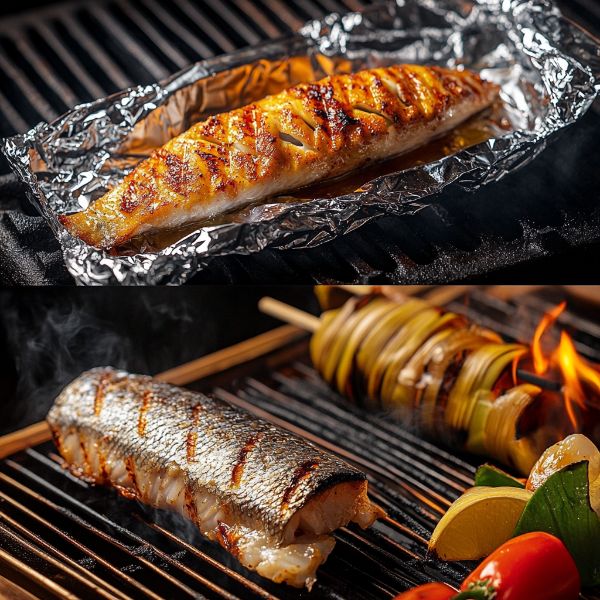
Enhancing the Foil-Cooking Experience
Adding Herbs and Spices for Aroma and Taste
The right combination of aromatics and seasonings can transform a simple fish dish:
- Herbs: Fresh dill, parsley, and basil add brightness.
- Spices: Paprika, cumin, or curry powder introduce warmth and depth.
- Aromatics: Garlic, shallots, and ginger elevate the complexity of flavours.
Using Citrus and Vegetables for Added Nutrition
Adding slices of lemon, orange, or lime not only enhances the flavour but also provides a burst of vitamin C and freshness. Vegetables like cherry tomatoes, zucchini, and bell peppers can be included in the foil packet, making it a complete, nutritious meal.
Cooking Fish in Foil: Step-by-Step
Preparing the Foil and Fish
- Cut a piece of foil large enough to wrap the fish completely.
- Lightly oil the foil to prevent sticking.
- Place the seasoned fish in the centre and layer with vegetables or citrus slices.
Wrapping Techniques to Ensure Even Cooking
- Fold the foil edges up and over the fish, creating a tent-like shape.
- Seal the edges tightly to lock in steam, but avoid pressing down on the fish to maintain its structure.
Testing for Doneness and Serving
- Open the foil carefully to avoid steam burns.
- Use a fork to test for flakiness—the fish should separate easily.
- Serve directly in the foil for a rustic presentation, or transfer to a plate for a polished look.
For a visual tutorial, this step-by-step guide is a great resource.
Environmental Impact of Foil Cooking
Recycling Aluminium Foil Responsibly
While aluminium foil is convenient, it’s essential to recycle it properly to minimise waste. Clean, uncontaminated foil can be placed in recycling bins, but heavily soiled foil may need to be disposed of.
Reducing Waste in the Kitchen
To make foil cooking more sustainable:
- Use reusable alternatives like silicone baking mats or parchment paper when possible.
- Cut foil to size to avoid excess waste.
- Experiment with banana leaves or cabbage leaves for eco-friendly wrapping.
For sustainable cooking ideas, explore this environmental cooking guide.
Comparing Cooking Methods and Mastering Foil Cooking
Cooking fish in foil is a beloved technique, but how does it stack up against other popular cooking methods? In this final part, we’ll compare the texture, taste, and moisture retention of foil-wrapped fish with grilling and steaming. We’ll also explore expert opinions, cultural uses, and common mistakes to provide a comprehensive understanding.
Comparing Cooking Methods
Foil-Wrapped Fish vs Grilling: Texture and Taste
- Texture: Foil-wrapped fish results in a tender, steamed texture, while grilling gives the fish a slightly crisp exterior with charred edges. Grilling is ideal for firmer fish like tuna or swordfish, whereas foil preserves the delicate flakiness of softer varieties.
- Taste: Grilling imparts a smoky flavour that foil cannot replicate, but foil enhances the fish’s natural taste by trapping herbs and aromatics directly in contact with the fillet.
For those who love bold, smoky flavours, grilling might be preferable. However, foil is the better choice for retaining moisture and delicate seasonings.
Foil-Wrapped Fish vs Steaming: Differences in Moisture Retention
- Moisture Retention: Both methods excel at keeping fish moist, but steaming tends to produce slightly softer flesh due to the direct exposure to water vapour.
- Flavour: While steaming relies on the purity of the fish and basic seasonings, foil allows you to infuse complex flavours by including butter, spices, and vegetables within the wrap.
Steaming is a great option for health-conscious cooks, but foil cooking offers more versatility and depth of flavour.
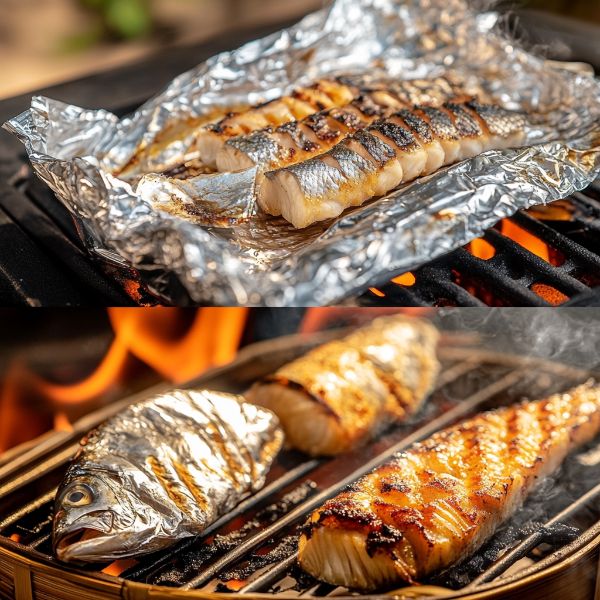
Expert Opinions on Foil Cooking
Insights from Chefs and Culinary Experts
Top chefs often use foil cooking to highlight the freshness of fish. Chef Jamie Oliver, for example, advocates wrapping fish with herbs, garlic, and olive oil for simple yet refined results. Similarly, culinary experts praise the method for its ability to concentrate flavours without requiring advanced skills or equipment.
Scientific Studies on Foil Cooking Methods
Research highlights the benefits of foil cooking for retaining nutrients. A study published in the Journal of Food Science revealed that sealed cooking methods like foil wrapping preserve up to 90% of a fish’s omega-3 fatty acids compared to other techniques.
On the downside, studies have also cautioned against cooking acidic ingredients in aluminium foil, as it may lead to trace amounts of metal leaching into the food. These risks, however, are minimal with occasional use and proper precautions.
Cultural Uses of Foil for Cooking Fish
Traditional Cuisines That Use Foil Cooking
Foil cooking has been adapted in various culinary traditions:
- Mediterranean Cuisine: Whole fish like sea bass are commonly cooked in foil with lemon, garlic, and herbs.
- Asian Dishes: In Japanese and Chinese cuisine, foil is used to cook fish with soy sauce, ginger, and spring onions.
- Western Barbecues: Foil-wrapped salmon or trout is a staple in outdoor grilling, often seasoned with butter and dill.
How Cultural Preferences Affect Flavour and Technique
Cultural nuances significantly influence the flavour profile:
- Mediterranean preparations often prioritise fresh, citrusy notes.
- Asian methods lean towards umami-rich soy and miso marinades.
- Western styles embrace hearty flavours like garlic butter or barbecue spices.
For an inspiring recipe, try this Mediterranean-style foil fish.
Common Mistakes When Cooking in Foil
Even a straightforward technique like foil cooking has its pitfalls. Avoid these errors to achieve consistently great results:
1. Overcooking and Its Effects on Texture
Overcooking fish in foil can make it rubbery and dry, despite the moisture-retaining benefits of the wrapping. To prevent this:
- Always follow recommended cooking times based on fish type and thickness.
- Use a food thermometer to check for an internal temperature of 63°C (145°F).
2. Wrapping Errors Leading to Uneven Cooking
Improper wrapping can cause parts of the fish to cook unevenly. Here’s how to avoid this:
- Use a large enough piece of foil to wrap the fish without gaps.
- Seal the edges tightly to create a steam-tight packet.
- Avoid crumpling the foil too tightly around the fish, as this can block heat circulation.
Conclusion: Is It Better to Cook Fish in Foil?
Summary of Pros and Cons of Foil Cooking
Pros:
- Retains moisture and enhances flavours.
- Convenient and easy to clean up.
- Versatile, accommodating a variety of ingredients and seasonings.
Cons:
- Does not provide a charred, smoky flavour.
- Environmental concerns if foil is not recycled.
- Potential health risks when used improperly with acidic foods.
Final Recommendation
The choice ultimately depends on your preferences and circumstances. If you value moisture retention, flavour infusion, and ease, cooking fish in foil is an excellent choice. However, for a smoky taste or crisp texture, grilling or baking without foil might be more suitable. By combining foil cooking with other methods, you can enjoy the best of both worlds.
FAQs
1. Can I use foil in all types of ovens?
Yes, aluminium foil is safe for use in conventional, fan-assisted, and toaster ovens. Avoid using it in microwaves.
2. What’s the best way to prevent sticking?
Lightly oil the foil or use a non-stick foil variant to ensure easy removal of the fish.
3. Does foil cooking reduce nutritional value?
No, foil cooking helps retain nutrients like omega-3 fatty acids and vitamins by trapping moisture and steam.
4. Can I reuse aluminium foil?
Yes, if the foil is clean and undamaged, it can be reused for cooking or other purposes.
5. How can I check if the fish is done without opening the foil?
Use a meat thermometer to measure the internal temperature through the foil.
6. Is parchment paper better than foil?
Parchment is eco-friendlier and non-reactive, but foil is better for high-heat grilling.
7. Can I cook frozen fish in foil?
Yes, but adjust the cooking time by 5–10 minutes longer, depending on the thickness.
8. How can I enhance the presentation of foil-cooked fish?
Serve directly in the foil for a rustic look or transfer to a plate and garnish with fresh herbs and lemon slices.
9. Are there alternatives to aluminium foil?
Yes, consider using parchment paper, banana leaves, or silicone baking mats.
10. Is cooking in foil safe for kids?
Yes, as long as the fish is cooked properly and not wrapped with acidic ingredients, foil-cooked fish is safe and nutritious for children.
